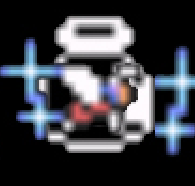I thought I’ll make this thread for all of you out there who have questions but are afraid to ask them. This is your chance!
I’ll try my best to answer any questions here, but I hope others in the community will contribute too!
Mods, perhaps a weekly post like this would be beneficial? Lowering the bar to entry with some available support and helping to keep converts.
Yeah I was thinking the same. Perhaps make a sticky post about it once a week.
Why does it feel that Linux infighting is the main reason why it never takes off? It’s always “distro X sucks”, “installing from Y is stupid”, “any system running Z should burn”
Linux generally has a higher (perceived?) technical barrier to entry so people who opt to go that route often have strong opinions on exactly what they want from it. Not to mention that technical discussions in general are often centered around decided what the “right” way to do a thing is. That said regardless of how the opinions are stated, options aren’t a bad thing.
There’s no infighting. It just feels that way because you picked an inferior distribution.
Because you don’t have an in person user group and only interact online where the same person calling all mandrake users fetal alcohol syndrome babies doesn’t turn around and help those exact people figure out their smb.conf or trade sopranos episodes with them at the lan party.
Doesn’t feel like that to me. I’ll need to see evidence that that is the main reason. It could be but I just don’t see it.
I mean, Wayland is still a hot topic, as are snaps and flatpaks. Years ago it was how the GTK2 to GTK3 upgrade messed up Gnome (not unlike the python 2 to 3 upgrade), some hardcore people still want to fight against systemd. Maybe it’s just “the loud detractors”, dunno
Why would one be discouraged by the fact that people have options and opinions on them? That’s the part I’m not buying. I don’t disagree that people do in fact disagree and argue. I don’t know if I’d call it fighting. People being unreasonably aggressive about it are rare.
I for one am glad that people argue. It helps me explore different options without going through the effort of trying every single one myself.
I’m using wayland right now, but still use X11 sometimes. I love the discussion and different viewpoints. They are different protocols, with different strengths and weaknesses. People talking about it js a vitrue in my opinion
I can only use x11 myself. The drivers for Wayland on nvidia aren’t ready for prime time yet, my browser flickers and some games don’t render properly. I’m frankly surprised the KDE folks shipped it out
Being I’m on Mint Cinnamon and using an Nvidia card, I’ve never even tried to run Wayland on this machine. Seems to work okay on the little Lenovo I put Fedora GNOME on. X11 is still working remarkably well for me, and I’m looking forward to the new features in Wayland once the last few kinks are worked out with it.
deleted by creator
Linux users are often very passionate about the software they put on their computers, so they tend to argue about it. I think the customization and choices scares off a lot of beginners, I think the main reason is lack of compatibility with Windows software out of the box. People generally want to use software they are used to.
Only dweebs on social media fight over distros. Nobody who matters.
Have you ever seen any other software centered forum? It’s not different. That’s not the reason.
How do symlinks work from the point of view of software?
Imagine I have a file in my downloads folder called movie.mp4, and I have a symlink to it in my home folder.
Whenever I open the symlink, does the software (player) understand «oh this file seems like a symlink, I should go and open the original file», or it’s a filesystem level stuff and software (player) basically has no idea if a file I’m opening is a symlink or the original movie.mp4?
Can I use sync software (like Dropbox, Gdrive or whatever) to sync symlinks? Can I use sync software to sync actual files, but only have symlinks in my sync folder?
Is there a rule of thumb to predict how software behaves when dealing with symlinks?
I just don’t grok symbolic links.
A symlink works more closely to the first way you described it. The software opening a symlink has to actually follow it. It’s possible for a software to not follow the symlink (either intentionally or not).
So your sync software has to actually be able to follow symlinks. I’m not familiar with how gdrive and similar solutions work, but I know this is possible with something like rsync
So I guess it’s something like pressing ctrl+c: most software doesn’t specifically handle this hotkey so in general it will interrupt a running process, but software can choose to handle it differently (like in vim ctrl+C does not interrupt it).
Thanks.
Fun fact: pressing X (close button) on a window does not make it that your app is closed, it just sends a signal that you wish to close it, your app can choose what to do with this signal.
A symlink is a file that contains a shortcut (text string that is automatically interpreted and followed by the operating system) reference to another file or directory in the system. It’s more or less like Windows shortcut.
If a symlink is deleted, its target remains unaffected. If the target is deleted, symlink still continues to point to non-existing file/directory. Symlinks can point to files or directories regardless of volume/partition (hardlinks can’t).
Different programs treat symlinks differently. Majority of software just treats them transparently and acts like they’re operating on a “real” file or directory. Sometimes this has unexpected results when they try to determine what the previous or current directory is.
There’s also software that needs to be “symlink aware” (like shells) and identify and manipulate them directly.
You can upload a symlink to Dropbox/Gdrive etc and it’ll appear as a normal file (probably just very small filesize), but it loses the ability to act like a shortcut, this is sometimes annoying if you use a cloud service for backups as it can create filename conflicts and you need to make sure it’s preserved as “symlink” when restored. Most backup software is “symlink aware”.
Software opens a symlink the same way as a regular file. The kernel reads a path stored in a symlink and then opens a file with that path (or returns a error if unable to do this for some reason). But if a program needs to perform specific actions on symlinks, it is able to check the file type and resolve symlink path.
To determine how some specific software handle symlinks, read its documentation. It may have settigs like “follow symlinks” or “don’t follow symlinks”.
ELI5: when a computer stores something like a file or a folder, it needs to know where it lives and where its contents are stored. Normally where the a file or folder lives is the same place as where its contents are. But there are times where a file may live in one place and its contents are elsewhere. That’s a symlink.
So for your video example, the original video is located in Downloads so the video file will say I am movie.mp4 and I live i live in downloads, and my contents are in downloads. While the symlink says, I am movie.mp4 I live in home, and my contents are in downloads over there.
For a video player, it doesn’t care if the file and the content is in the same place, it just need to know where the content lives.
Now how software will treat a symlink as an absolute. For example if you have 2 PCs synced with cloud storage, and both downloads and home is being synced between your 2 pcs. Your cloud storage will look at the symlink, access the content from pc1 and put your movie.mp4 in pc2’s downloads and home. But it will also put the contents in both places in pc2 since to it, the results are the same. One could make software sync without breaking the symlink, but it depends on the developer and the scope of the software.
Whenever I open the symlink, does the software (player) understand «oh this file seems like a symlink, I should go and open the original file», or it’s a filesystem level stuff and software (player) basically has no idea if a file I’m opening is a symlink or the original movie.mp4?
Others have answered well already, I just will say that symlinks work at the filesystem level, but the operating system is specially programmed to work with them. When a program asks the operating system to open a file at a given path, the OS will automatically “reference” the link, meaning it will detect a symlink and jump to the place where the symlink is pointing.
A program may choose to inspect whether a file is a symlink or not. By default, when a program opens a file, it simply allows the operating system to reference the file path for it.
But some apps that work on directories and files together (like “
find”, “tar”, “zip”, or “git”) do need to worry about symlinks, and will check if a path is a symlink before deciding whether to reference it. For example, you can ask the “find” command to list only symlinks without referencing them:find -type lits a pointer.
E: Okay so someone downvoted “it’s a pointer”. Here goes. both hard links and symbolic links are pointers.
The hard link is a pointer to a spot on the block device, whereas the symbolic link is a pointer to the location in the filesystems list of shit.
That location in the filesystems list of shit is also a pointer.
So like if you have /var/2girls1cup.mov, and you click it, the os looks in the file system and sees that /var/2girls1cup.mov means 0x123456EF and it looks there to start reading data.
If you make a symlink to /var/2girls1cup.mov in /bin called “ls” then when you type “ls”, the os looks at the file in /bin/ls, sees that it points to /var/2girls1cup.mov, looks in the file system and sees that it’s at 0x123456EF and starts reading data there.
If you made a hard link in /bin called ls it would be a pointer to the location on the block device, 0x123456EF. You’d type “ls” and the os would look in the file system for /bin/ls, see that /bin/ls means 0x123456EF and start reading data from there.
Okay but who fucking cares? This is stupid!
If you made /bin/ls into /var/2girls1cup.mov with a symlink then you could use normal tools to work with it, looking at where it points, it’s attributes etc and like delete just the link or fully follow (dereference) the link and delete all the links in the chain including the last one which is the filesystems pointer to 0x123456EF called /var/2girls1cup.mov in our example.
If you made /bin/ls into a hardlink to 0x123456EF, then when you did stuff to it the os wouldn’t know it’s also called /var/2girls1cup.mov and when /bin/ls didn’t work as expected you’d have to diff the output of mediainfo on both files to see that it’s the same thing and then look where on the hard drive /var/2girls1cup.mov and /bin/ls point to and compare em to see oh, someone replaced my ls with a shock video using a hard link.
When you delete the /bin/ls hardlink, the os deletes the entry in the file system pointing to 0x123456EF and you are able to put normal /bin/ls back again. Deleting the hard link wouldn’t actually remove the data that comprises that file off the drive because “deleting” a “file” is just removing the file systems record that there’s something there to be aware of.
If instead of deleting the /bin/ls hardlink, you opened it up and replaced the video portion of its data with the music video to never gonna give you up, then when someone tried to open /var/2girls1cup.mov they’d instead see that music video.
if that is, the file wasn’t moved to another place on the block device when you changed it. Never gonna give you up has a much longer running time than 2girls1cup and without significant compression the os is gonna end up putting /bin/ls in a different place in the block device that can accommodate the longer data stream. If the os does that when you get done modifying your 2girls1cup /bin/ls into rickroll then /bin/ls will point to 0x654321EF or something and only you will experience astleys dulcet tones when you use ls, the old 0x123456EF location will still contain the data that /var/2girls1cup.mov is meant to point to and you will have played yourself.
Okay with all that said: how does the os know what to do when one of its standard utilities encounters a symlink? They have a standard behavior! It’s usually to “follow” (dereference) the link. What the fuck good would a symbolic link be if it didn’t get treated normally? Sometimes though, like with “ls” or “rm” you might want to see more information or just delete the link. In those cases you gotta look at how the software you’re trying to use treats links.
Or you can just make some directories and files with touch and try what you wanna do and see what happens, that’s what I do.
Maybe not a super beginner question, but what do awk and sed do and how do I use them?
This is 80% of my usage of awk and sed:
“ugh, I need the 4th column of this print out”:
command | awk '{print $4}'Useful for getting pids out of a
pscommand you applied a bunch ofgreps to.”hm, if I change all ‘this’ to ‘that’ in the print out, I get what I want":
command | sed "s/this/that/g"Useful for a lot of things, like “I need to change the urls in this to that” or whatever.
Basically the rest I have to look up.
I say that covers around 99% of the awk/sed I use.
I was gonna write 99%, but then I remember I also need capture groups quite often. That would make 99% I’d say
Awk lets you do operations based on patterns. You can make little scripts and mini programs with it.
Sed lets you edit streams.
Almost everything can be treated like a stream so with those two tools you have the power to do damn near everything ever.
Awk is a programming language designed for reading files line by line. It finds lines by a pattern and then runs an action on that line if the pattern matches. You can easily write a 1-line program on the command line and ask Awk to run that 1-line program on a file. Here is a program to count the number of “comment” lines in a script:
awk 'BEGIN{comment_count=0;} /^[[:space:]]*[#]/{comment_count++;} END{print(comment_count);}' file.shIt is a good way to inspect the content of files, espcially log files or CSV files. But Awk can do some fairly complex file editing operations as well, like collating multiple files. It is a complete programming language.
Sed works similar to Awk, but it is much simplified, and designed mostly around CLI usage. The pattern language is similar to Awk, but the commands are usually just one or two letters representing actions like “print the line” or “copy the line to the in-memory buffer” or “dump the in-memory buffer to output.”
If you’re gonna dive into sed and awk, I’d also highly recommend learning at least the basics of regular expressions. The book Mastering Regular Expressions has been tremendously helpful for me.
Edit: a letter. Stupid autocorrect.
What is the system32 equivalent in linux
/bin, since that will include any basic programs (bash, ls, cd, etc.).
As in, the directory in which much of the operating system’s executable binaries are contained in?
They’ll be spread between /bin and /sbin, which might be symlinks to /usr/bin and /usr/sbin. Bonus points is /boot.
For the memes:
sudo rm -rf /*
This deletes everything and is the most popular linux meme
The same “expected” functionality:
sudo rm -rf /bin/*
This deletes the main binaries. You kinda can recover here but I have never done it.
/usr/lib or /usr/lib64 or /lib (some distros) or /lib64
Some things (like hosts file) are in /etc. /etc mostly contains configs.
NixOS. I don’t get what it really is or does? It’s a Linux distribution but with ceavets or something
In the terminal, why can’t i paste a command that i have copied to the clipboard, with the regular Ctrl+V shortcut? I have to actually use the mouse and right click to then select paste.
(Using Mint cinnamon)
The terminal world has Ctrl+C and Ctrl+(many other characters) already reserved for other things before they ever became standard for copy paste. For for this reason, Ctrl+Shift+(C for copy, V for paste) are used.
In Terminal land, Ctrl+C has meant Cancel longer than it’s meant copy. Shift + Insert does what you think Ctrl+V will do.
Also, there’s a separate thing that exists in most window managers called the Primary buffer, which is a separate thing from the clipboard. Try this: Highlight some text in one window, then open a text editor and middle click in it. Ta da! Reminder: This has absolutely nothing to do with the clipboard, if you have Ctrl+X or Ctrl+C’d something, this won’t overwrite that.
Old timer here! As many others replying to you indicate, Ctrl+C means SIGINT (interrupt running program). Many have offered the Ctrl+Shift+C, but back in my day, we used Shift+Insert (paste) and Ctrl+Insert (copy). They still work today, but Linux has 2 clipboard buffers and Shift+Insert works against the primary.
As an aside, on Wayland, you can use wl-paste and wl-copy in your commands, so
git clone "$(wl-paste)"will clone whatever repo you copied to your clipboard. I use this one all the timeTry ctrl+shift+v, iirc in the terminal ctrl+v is used as some other shortcut (and probably has been since before it was standard for “paste” I’d bet).
Also linux uses two clipboards iirc, the ctrl+c/v and the right click+copy/paste are two distinct clipboards.
Does Ctrl+Shift+V work?
In most terminal (gnome terminal, blackbox, tilix etc.) you can actually override this behavior by changing keyboard shortcut. Blackbox even have a simple toggle that will enable ctrl+c v copy paste.
Gnome console is the only terminal I know that doesn’t allow you to change this.
Interesting! Ill check that out with mint!
What usually also works on Linux is selecting text with the mouse and pasting it by pressing the middle mouse button (or scroll wheel). You’d still need the mouse, but it’s at least a little quicker ☺️
Ctrl+shift+V is what you should do. Ctrl+V is used by shells for I believe inserting characters without doing some sort of evaluation. I don’t remember the specifics though, but yes Ctrl+shift+V to paste.
Shift + insert
Use shift+control+v to paste. Shift+control+c to copy in the terminal. It’s this way because control+c in the terminal is to break out of the currently running process.
While I don’t have the answer as to why, it usually works if you just add a shift, ie. SHIFT+CTRL+V Many terminals also allow you to change the shortcut to copy and paste, so you can adjust for comfort’s sake.
Ctrl+V is already a shortcut for something (I don’t even know what) but to paste just add shift so Ctrl+Shift+V.
(Also a beginner btw)
On Android, when an app needs something like camera or location or whatever, you have to give it permission. Why isn’t there something like this on Linux desktop? Or at least not by default when you install something through package manager.
Android apps are sandboxed by default while packages on Linux run with the users permission.
There is already something like this with Flatpak since it also sandboxes every installed program and only grants requested permissions.
Because it requires a very specific framework to be built from the ground up, and FDO doesn’t specify these. A lot of breakage would happen if were to shoehorn such changes into Linux suddenly. Android has many layers of security that they’re fundamentally different than that of the unix philosophy. That’s why Android, even if it’s based on Linux, it’s not really considered “a distro”.
It is technically doable, but that would require a unified method to call when an app needs camera, and that method will show the prompt.
This would technically require developers to rewrite their apps on linux, which is not happening anytime soon.
Fortunately, pipwire and xdg-portal is currently doing this work, like when you screen share on zoom using pipwire, a system prompt will pop up asking you for what app to share. Unlike on Windows, zoom cannot see your active windows when using this method, only the one that you choose to share.
Most application framework, including GTK and electron, are actively supporting pipwire and portal, so the future is bright.
There is a lot of work in improving security and usablity of linux sandbox, and it is already much better than Windows (maybe also better than macos?). I am confident, in 5 years, linux sandbox stack (flatpak, protal, pipewire) will be as secure and usable as on android and ios.
Is there an Android emulator that you can actually game on? I’ve tried a number of them (Android x86, Genymotion, Waydroid), but none of them can install a multitude of games from the Google Play store. The one thing keeping me on Windows is Android emulation (I like having one or two idle games running at any given time).
deleted by creator
Most probably, no. I tried to run bluestacks on wine. Some game works, most of em don’t
Why in Linux, Software uses a particular version of a library? Why not just say it’s dependent on that library regardless of version? It become pain in ass when you are using an ancient software it required old version of newer library so you have to create symlinks of every library to match old version.
I know that sometimes newer version of Library is not compatible with software but still. And what we can do as a software developer to fix this problem? Or as a end user.
Software changes. Version 0.5 will not have the same features as Version 0.9 most of the time. Features get added over time, features get removed over time and the interface of a library might change over time too.
As a software dev, the only thing you can do is keep the same API for ever, but that is not always feasible.
Hey, Thanks I have one more question. Is it possible to ship all required library with software?
It is, that’s what Windows does. It’s also possible to compile programs to not need external libraries and instead embed all they need. But both of these are bad ideas.
Imagine you install dolphin (the KDE file manager) It will need lots of KDE libraries, then you install Okular (KDE PDF reader) it will require lots of the same library. Extend that to the hundreds of programs that are installed on your computer and you’ll easily doubled the space used with no particular benefit since the package manager already takes care of updating the programs and libraries together. Not just that, but if every program came with it’s own libraries, if a bug/security flaw was found in one of the libraries each program would need to upgrade, and if one didn’t you might be susceptible to bugs/attacks through that program.
Thanks you so much for explanation.
Absolutely! That’s called static linking, as in the library is included in the executable. Most Rust programs are compiled that way.
Yea, That’s why I am learning Rust but I didn’t know it called Static Linking I think it just how Rust works LMAO. And Thanks again
No problem. Good luck with your rust journey, it’s imo the best programming language.
Appimage might also be a way
To add some nuance, all features in v0.5.0 should still exist in v0.9.0 in the modern software landscape.
If v0.5.0 has features ABC and then one was then changed, under semantic versioning which most software follows these days then it should get a breaking change and would therefore get promoted to v1.0.0.
If ABC got a new feature D but ABC didn’t change, it would have been v0.6.0 instead. This system, when stuck to,helps immensely when upgrading packages.
When having a breaking change pre 1.0.0, I’d expect a minor version bump instead, as 1.0.0 signals that the project is stable or at least finished enough for use.
Because it’s not guaranteed that it’ll work. FOSS projects don’t run under strict managerial definitions where they have to maintain compatibility in all their APIs etc. They are developed freely. As such, you can’t really rely on full compatibility.
That’s the same on ANY platform, but windows is far worse because most apps ship a DLL and -never- update the damn thing. With Linux, it’s a little bit more transparent. (edit: unless you do the stupid shit and link statically, but again in the brave new world of Rust and Go having 500 Mb binaries for a 5 Kb program is acceptable)
Also, applications use the API/ABI of a particular library. Now, if the developers of the said library actually change something in the library’s behavior with an update, your app won’t work it no more unless you go and actually update your own code and find everything that’s broken.
So as you can understand, this is a maintenance burden. A lot of apps delegate this to a later time, or something that happens sometimes with FOSS is that the app goes unmaintained somewhat, or in some cases the app customizes the library so much, that you just can’t update that shit anymore. So you fix on a particular version of the library.
You sometimes can build software that will work with more than one version of a C library, but less and less software is being written that binds only to C libraries. The key topic you want to look up is probably “ABI stability”.
I installed Debian today. I’m terrified to do anything. Is there a single button backup/restore I can depend on when I ultimately fuck this up?
deleted by creator
These have both saved my ass on numerous occasions. Btrfs especially is pretty amazing.
You want a disk imager like clonezilla or something. If you’re not ready for that just show hidden files and copy your /home/your_username directory to a usb or something. That’s where all your files live.
Install everything from store, and you should be fine. If you see a tutorial being too complicated, it is probably not worth following. Set your search engine to past year and see if there are better tutorials.
You might also want to consider atomic distros, they are much harder to mess up, and much easier to restore.
No I’m doing it to learn self hosting, I’m doing the hard stuff on purpose
Oh! in that case may I suggest yachts with docker containers? https://yacht.sh/
Everything on my homeserver is directly installed on the server, keeping them up-to-date is pretty annoying, and permission control is completely non-existent.
Since want to do things the hard way, I believe this can also be a good opportunity to do things in the “better” way (at least IMO).
Ah now that does look promising, I had settled on portainer but this yacht program looks very noob friendly! I’ll install it today and check it out! Cheers!
Portainer are great too! But yacht seems to be specifically designed for self-hosting.
I ran Linux in a vm and destroyed it about… 5 times. It allowed me to really get in and try everything. Once I rana command that removed everything, and I remember watching icons disappear as the destruction unfolded in front of me. It was kind of fun.
I have everything backed up and synced so it’s all fine. Just lots of reinstalling Thunderbird, Firefox, re logging into firefox sync, etc.
Once I stopped destroying everything I did a proper install and haven’t looked back.
This will be my 7th year on Linux now. And I have to say, it feels good to be free.
Considering switching to Linux, but don’t know what to choose/what will work for my needs. I want to be able to play my steam games, use discord desktop application, and use FL Studio. I need it to work with an audio interface and midi controller too. I am not interested in endless tweaking of settings, simple install would be nice. What should I go for?
Mint would probably work for you. Some stuff is outdated, but it has flatpak which is a package manager with more up to date apps. If you’re willing to put in the time though, I’d recommend trying some of the more common distros out (Mint, Debian, Ubuntu, Fedora). You can use a liveusb to test them without installing.
Steam is available anywhere so that’s not a problem.
Discord officially only has a .deb package, so that’s only for Debian based distros (Debian, Ubuntu, Mint). There are other options for almost all distros though - I personally use Webcord
Fl studio might be tricky - supposedly it runs through wine but you might have to do a bit of work. I’ve personally used Reaper and I works great.
I just had to install with wine and add some fonts to the wine prefix
Adding to what others have said I also think Mint is a great option. But I strongly encourage you to install things via the package manager when available, I find that a lot of times when someone complains that something (that should work) doesn’t work on Linux is because they’re trying to install things manually, i.e. the Windows way (open browser, search for program name, open website, download installer, open installer, follow instructions), that’s almost never the correct way on Linux.
Mint is probably the best install and go experience out there.
As a fellow user in similar situation, i can tell that i had tried dual boot a few times but would just switch to windows when i wanted something done that didn’t work on linux
3 weeks ago i went full Mint install and left windows altogether. This forced me to find solutions to problems that i otherwise would solve by just switching to windows. Dont expect everything to work though. You will need to tweak some things and you may even need to do some things differently than youre used to. But isn’t this why we change in the first place?
Any word on the next generation of matrix math acceleration hardware? Is anything currently getting integrated into the kernel? Where are the gource branches looking interesting for hardware pulls and merges?
How the hell do I set up my NAS (Synology) and laptop so that I have certain shares mapped when I’m on my home network - AND NOT freeze up the entire machine when I’m not???
For years I’ve been un/commenting a couple of lines in my fstab but it’s just not okay to do it that way.
https://wiki.archlinux.org/title/Fstab#External_devices
looks like this will do it. no-fail and a systemd timeout
Aha, interesting, thank you. So setting
nofailand a time out of, say, 5s should work… but what then when I try to access the share, will it attempt to remount it?Look up “automount”. You can tell linux to watch for access to a directory and mount it on demand.
This is also what I’d like to know, and I think the answer is no. I want to have NFS not wait indefinitely to reconnect, but when I reconnect and try going to the NFS share, have it auto-reconnect.
edit: This seemed to work for me, without waiting indefinitely, and with automatic reconnecting, as a command (since I don’t think bg is an fstab option, only a mount command option): sudo mount -o soft,timeo=10,bg serveripaddress:/server/path /client/path/
User login script could do it. Have it compare the wireless ssid and mount the share if it matches. If you set the entry in fstab to noauto it’ll leave it alone till something says to mount it.
I want to start with Btrfs and snapshots, is there a good, beginner friendly tutorial for those coming from a ext* filesystem?
If you try a distro that does it by default then it is no more complicated then ext4 for the user. The distro will setup things for you. I know that opensuse Tumbleweed and Fedora Workstation set this up by default. Manually configuring is how ever a bit more complicated.




















